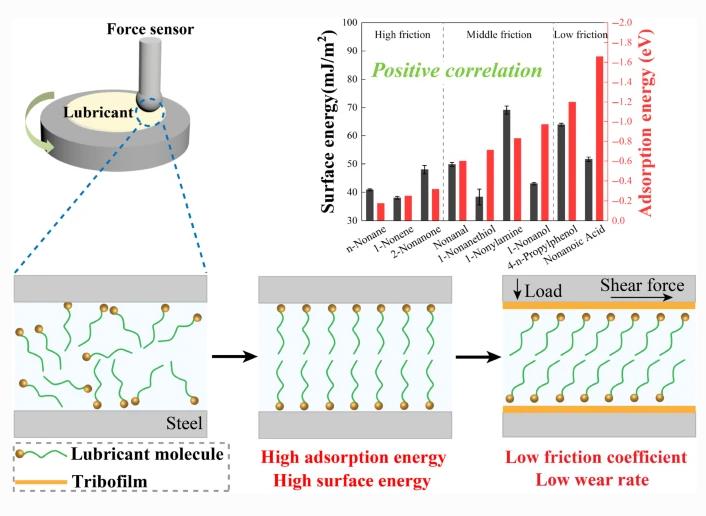Abstract
Nine organic compounds were utilized as model lubricants to investigate the impact of functional groups on tribological performances. Nonanoic Acid with carboxyl showed the best lubrication properties, and fluid film and tribofilm were coexistent in its friction test, bringing a low friction coefficient and wear rate. In addition, the lubricant with low friction coefficient corresponded to high adsorption energy in density functional theory (DFT) calculations. And the lubricant forming adsorption film with large surface energy displayed small wear rate in friction test. Moreover, adsorption energies positively correlated surface energies. Based on the experimental results, the action mechanism of functional groups on tribological properties of lubricants was proposed. Various functional groups make lubricant molecules show different adsorption energies and surface energies. Lubricant molecules with high adsorption energy are more likely to adsorb on substrates and form a vertical monolayer, which can maintain a regular molecular brush structure during friction and bring a low friction coefficient. And lubricant molecules with high surface energy may be more prone having tribochemical reactions during friction and forming protective tribofilm, which leads to a low wear rate.

Keywords Plus:ORGANIC FRICTION MODIFIERSMOLECULAR-DYNAMICS SIMULATIONSGLOBAL ENERGY-CONSUMPTIONIN-SITUWETTING BEHAVIOROILADSORPTIONWETTABILITYSURFACTANTSADDITIVES
Published in FRICTION;10.1007/s40544-022-0630-9,JUL 2022


